Where To Find Fiddlehead Ferns
- Team CIPS

- May 11, 2022
- 4 min read
Updated: May 7, 2025

Hey everyone, Corey Kinsella here from CIPS (Cambium Indigenous Professional Services, Technical Advisor).
Today, I am going to show you where to find fiddlehead ferns and how to identify them. These spring blooming ferns are super tasty (they make a great side dish) and high in nutritional value.
Below is a transcription of Corey's video "where to find fiddlehead ferns"
-------------------------- Hello (aanii) everyone, Corey Kinsella from CIPS (Cambium Indigenous Professional Services). We're doing some environmental assessment work here in central Ontario.
It's a bright, sunny day here on May the 5th and have come across a patch of ostrich ferns (fiddlehead ferns). I though I would do a little "how to" on how to identify (fiddlehead ferns) them when you are out in your traditional territory this spring.
Where you are out and about and looking for fiddleheads, you want to be near a water source or a wetland (as we are here). There's (a wetland) one to our north about 10 to 20 metres.
You can see here, these ostrich ferns (fiddlehead ferns) are starting to sprout pretty fast. We've got a good patch of them here and when you're looking for ostrich ferns (fiddlehead ferns), how you identify them is the nice bright green.
You can see that they have this ridge in the middle of them (stalk) and kind of like a celery but they're not furry, nice and smooth.
(Want to know how I make my maple syrup? Check my page out called "how maple syrup is made")
When you want to pick them is when they are nice and tight, furled up (like this). You will pull them off and you will have yourself some good eating. You can see over here that we have more (fiddleheads) coming up.
The nice, tight ones near the ground are perfect for harvesting. As you can see, when you find some (obviously) you will find a lot more (fiddlehead ferns).
Happy harvesting!
-End of transcription-
How to identify fiddlehead ferns. Fiddleheads are green in colour with the tops curled up. There is usually a bunch of small ferns in the middle of the curled up stalk (called fronds). Fiddle head ferns usually have a smooth stalk, similar to celery but not rough or furry.
Fiddlehead ferns are usually bunched closely together in groups. See image below.
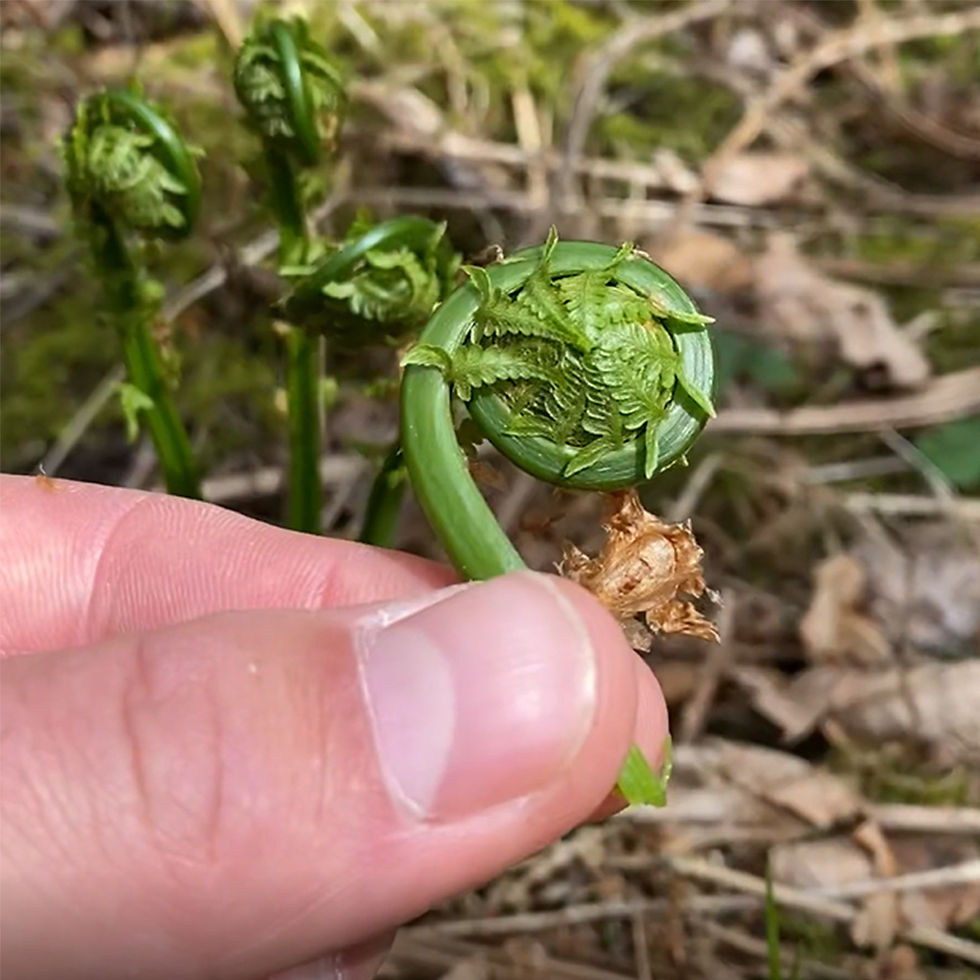
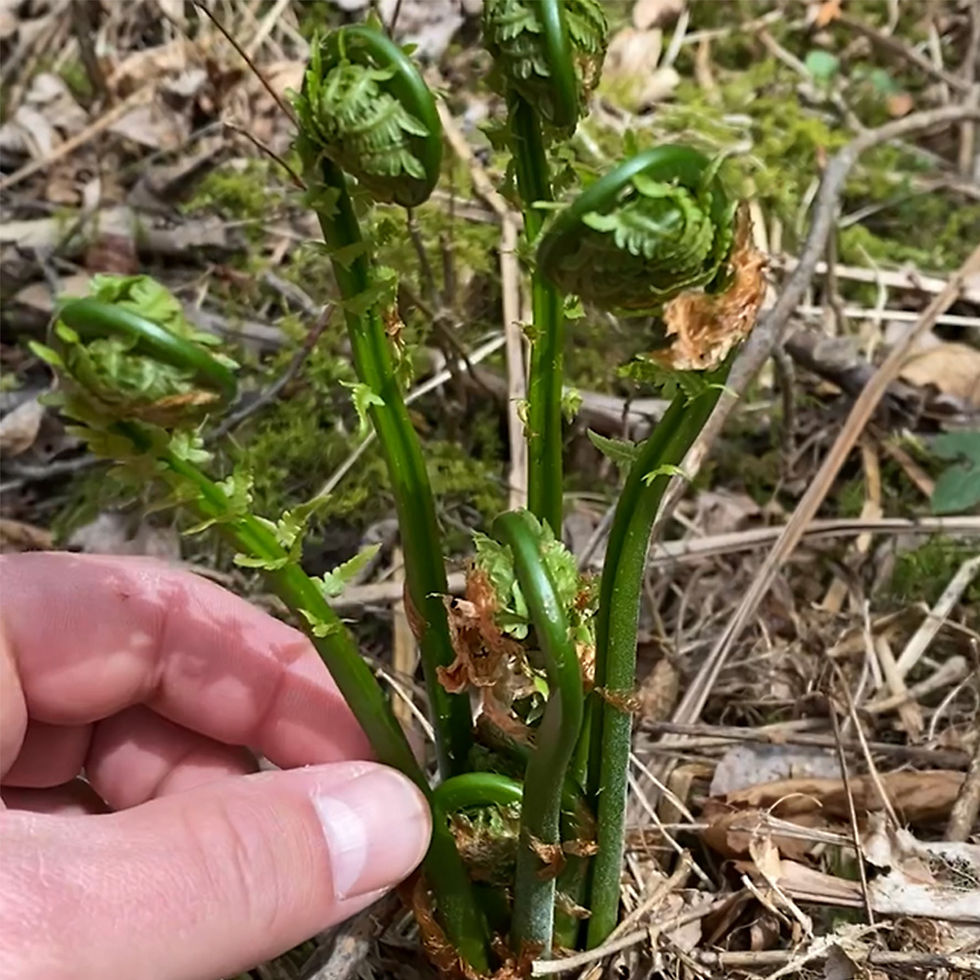
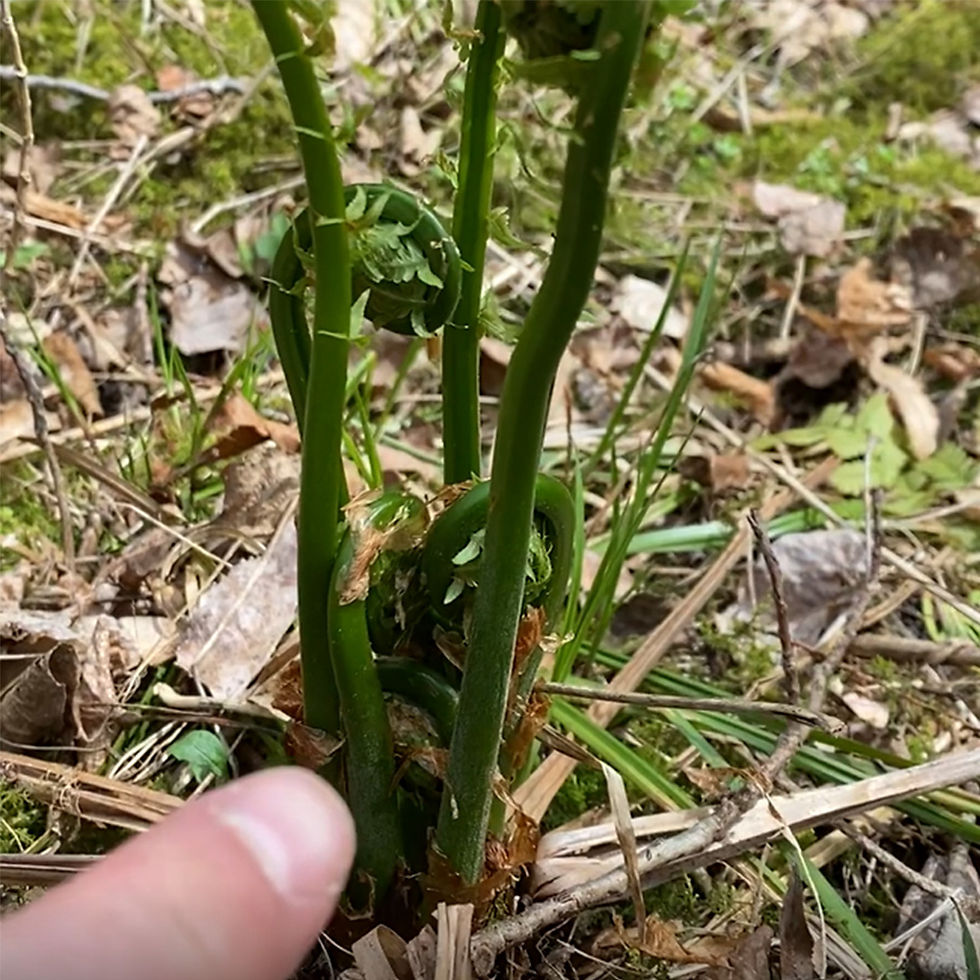
Where to find fiddlehead ferns? Fiddlehead ferns are usually located near a water source such as a river, pond, lake or a wetland such as a marsh. In the image below, I am pointing to a wet land about 30 feet away. Fiddlehead ferns will usually grow in bunches close by.
Fiddlehead ferns are notorious for growing on forest floors so your first job to find fiddlehead ferns is to find a heavily wooded area. Secondly, look for a water source. Thirdly, search 10 to 25 feet away from the banks of the water source, you should be able to find fiddlehead ferns.

Fiddlehead ferns will grow in stands. If you find one, chances are you are going to find more in the same area (stands). See the image below (see if you can pick out the fiddle head ferns!). Most wooded areas in Ontario (and Canada) will have fiddleheads growing near a water source.
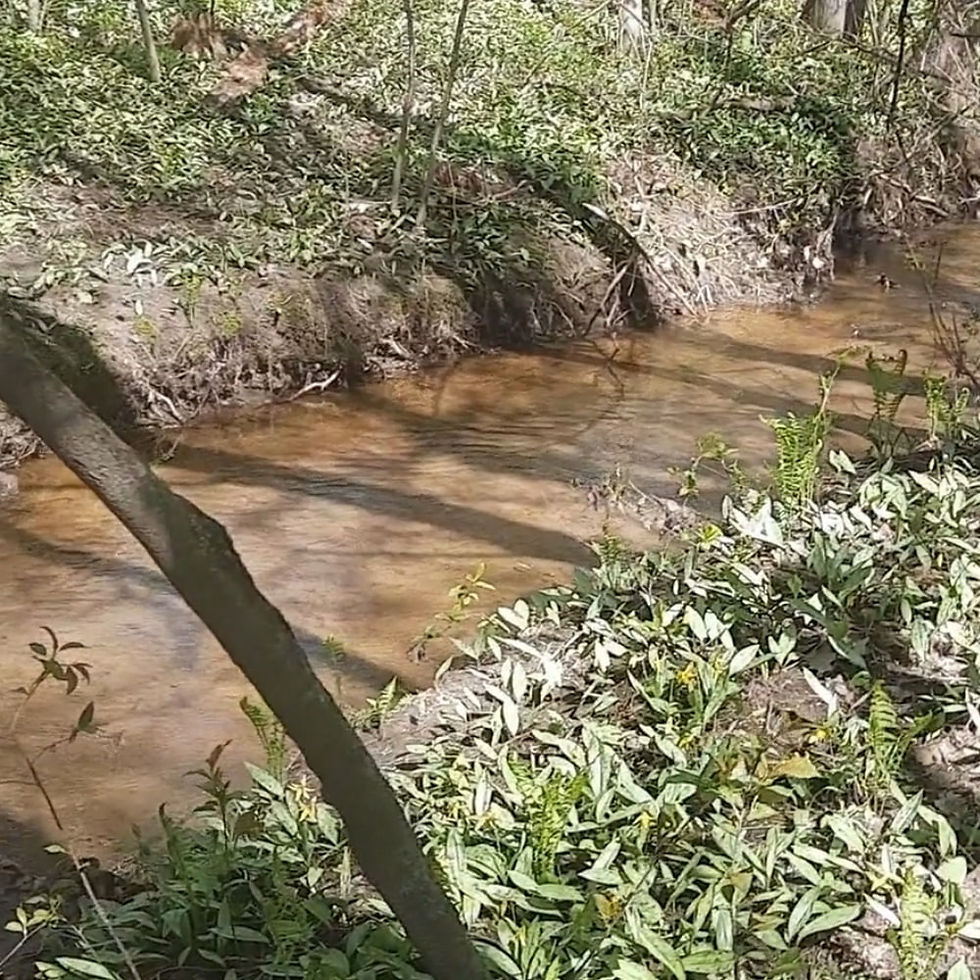
Usually, you will find fiddlehead ferns growing near a water source. In the above photos, fiddlehead ferns are growing on the bank of this small stream.
I live in North Bay so there are plenty of wooded areas with small streams around. Chances are, if you live near a water source (such as a small stream) you will find fiddlehead ferns.
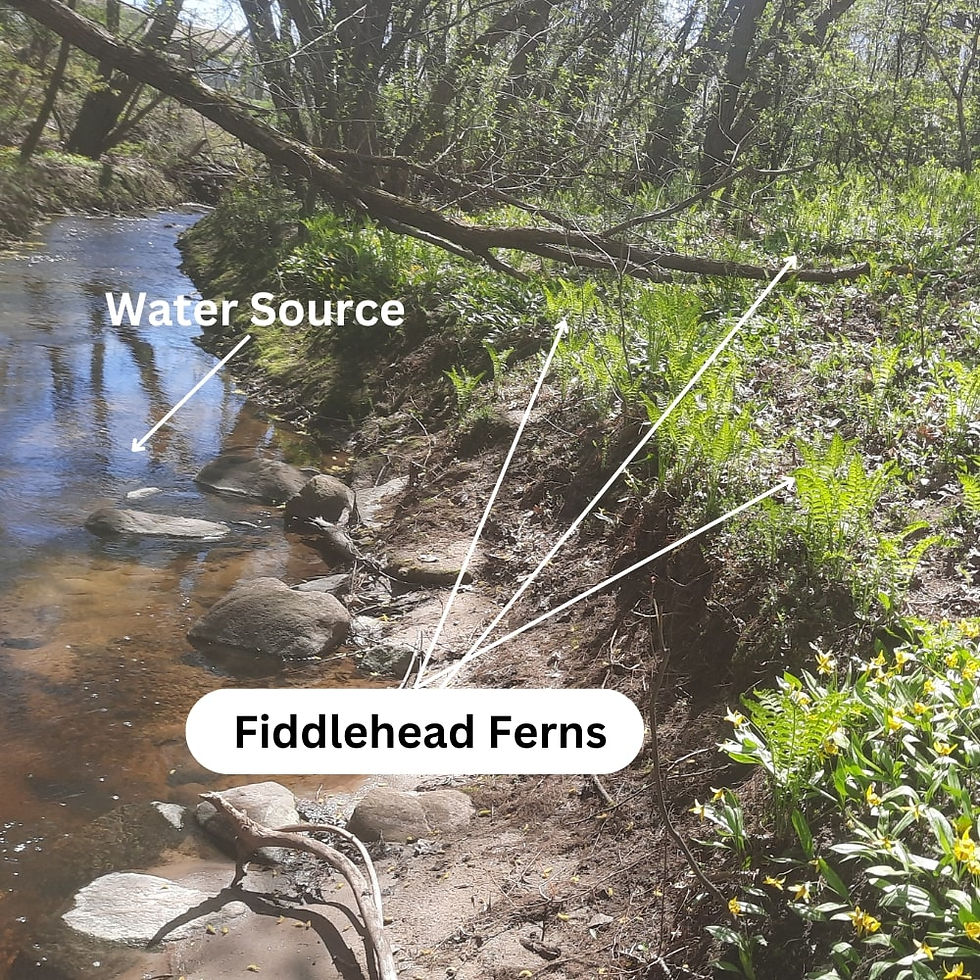

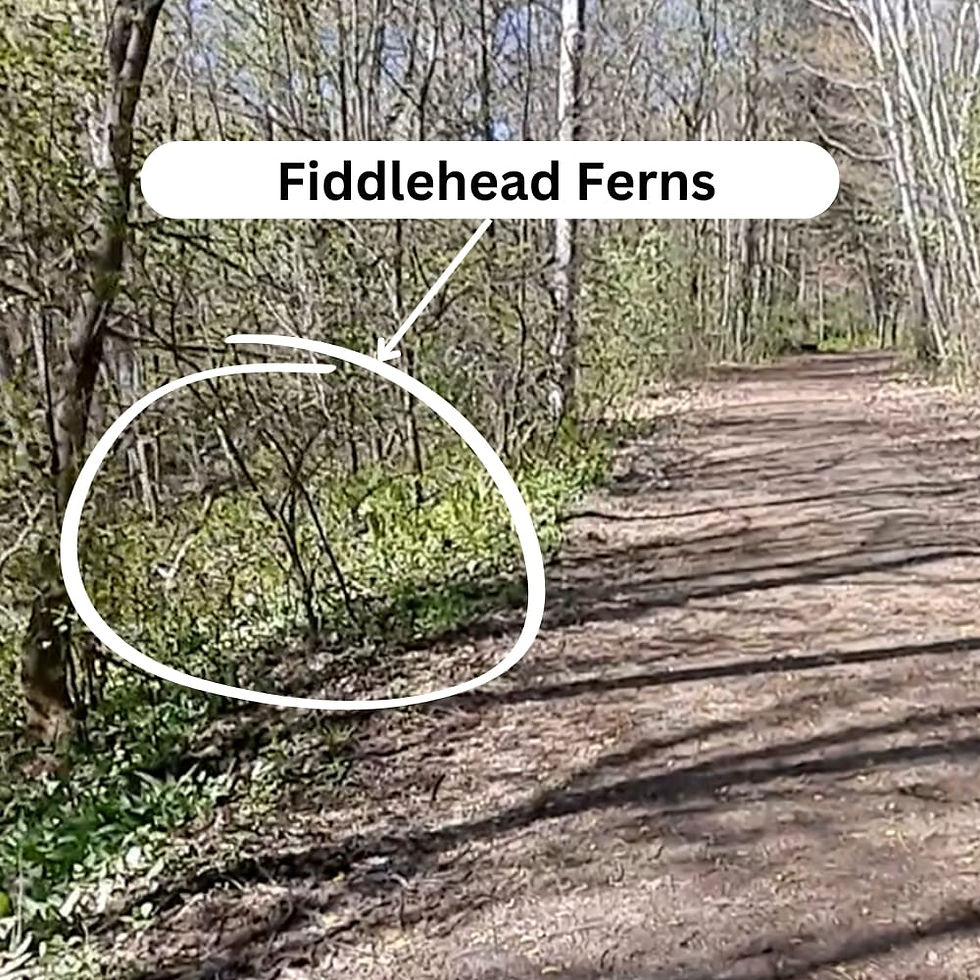
When to harvest fiddlehead ferns. Fiddle head ferns can be harvested in the spring. It is best to harvest fiddlehead ferns when the stalks are between 3 and 6 inches in length AND the tops (fronds) are still curled up. Break near the middle of the stalk so that the fern can keep growing after you harvest the fronds (top curled up part).
Fiddle head ferns are very tasty and have been used by Indigenous People as medicine and food for centuries. Often compared to (in taste) to asparagus and spring salads, fiddleheads are high in nutritional value. Fiddlehead ferns are high in fibrous carbohydrates (great for digestion), protein and important vitamins, minerals and trace elements such as zinc, magnesium, potassium, iron and copper.
When Do Fiddleheads Come Out? You can expect fiddleheads to come out mid to late April to early to mid May. This all depends on how warm it is and how early spring arrives. Here in North Bay, Ontario we had an early spring so Fiddleheads have come out earlier than usual. They started to come out mid / late April.
You have to remember, the harvesting season for Fiddleheads is only about 2 to 3 weeks long and depending on how warm it is, it can be shorter (or longer).
Remember, the next time you are around a wet land (and in the forest), keep an eye out for fiddlehead ferns.
Related Articles:








Great guide on finding and identifying fiddlehead ferns, especially the tips about wetlands and smooth green stalks. Reading about timing and precision in harvesting reminded me of the timing skills in Stickman Hook, where smooth movement really matters.
GeoGuessr drops you in places you may never visit in real life—remote roads in Mongolia, coastal towns in Portugal, or vibrant streets in Mexico. The thrill of discovering new environments is endless.
This is super helpful! I always wanted to try harvesting fiddleheads. Maybe I'll give it a shot this spring! It's interesting learning about wild edibles, makes you want to take personality test about what foraging style suits you.
Really informative post — I had no idea fiddlehead ferns grow mostly in wooded areas close to water. Thanks for the tips on identification and harvesting! flappy dunk
Finding fiddlehead ferns is a fascinating topic, and I like reading about it. Nature offers such distinctive resources; it's amazing. car games